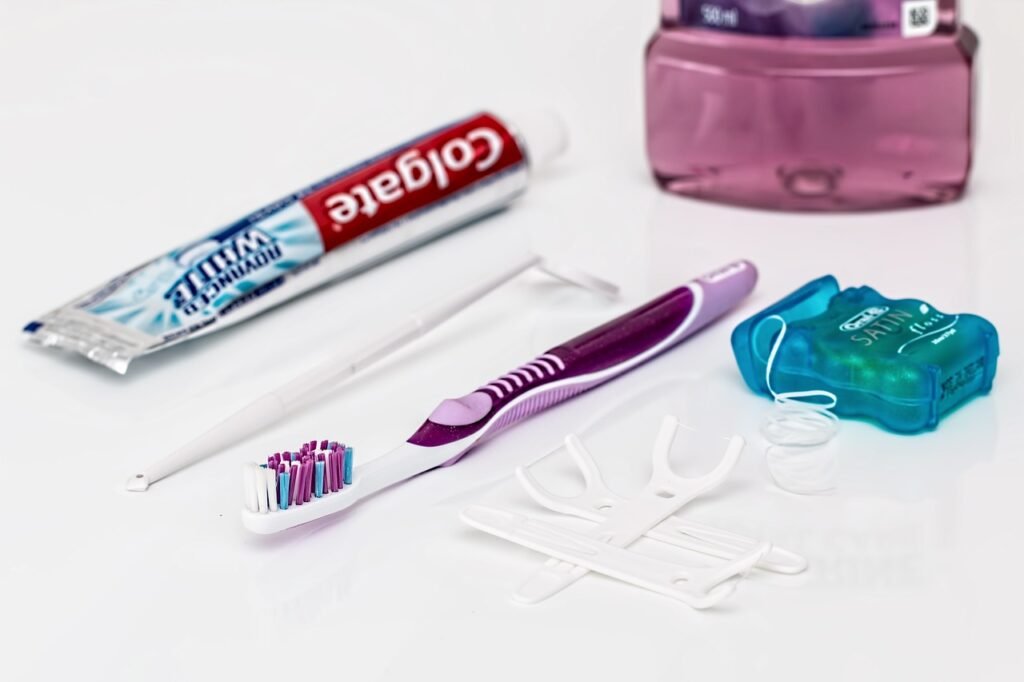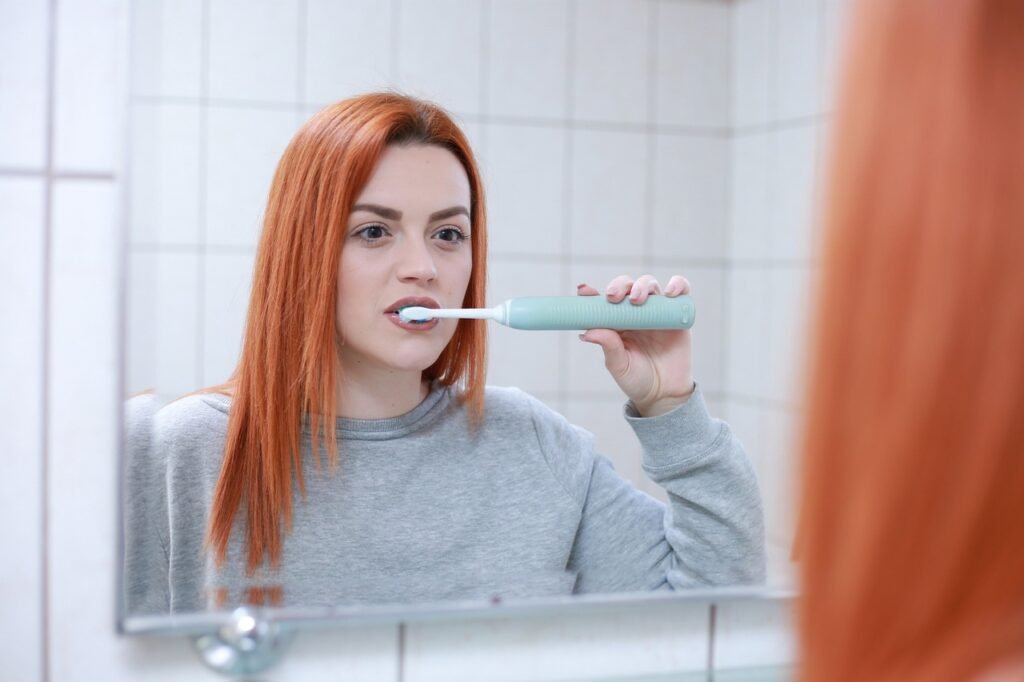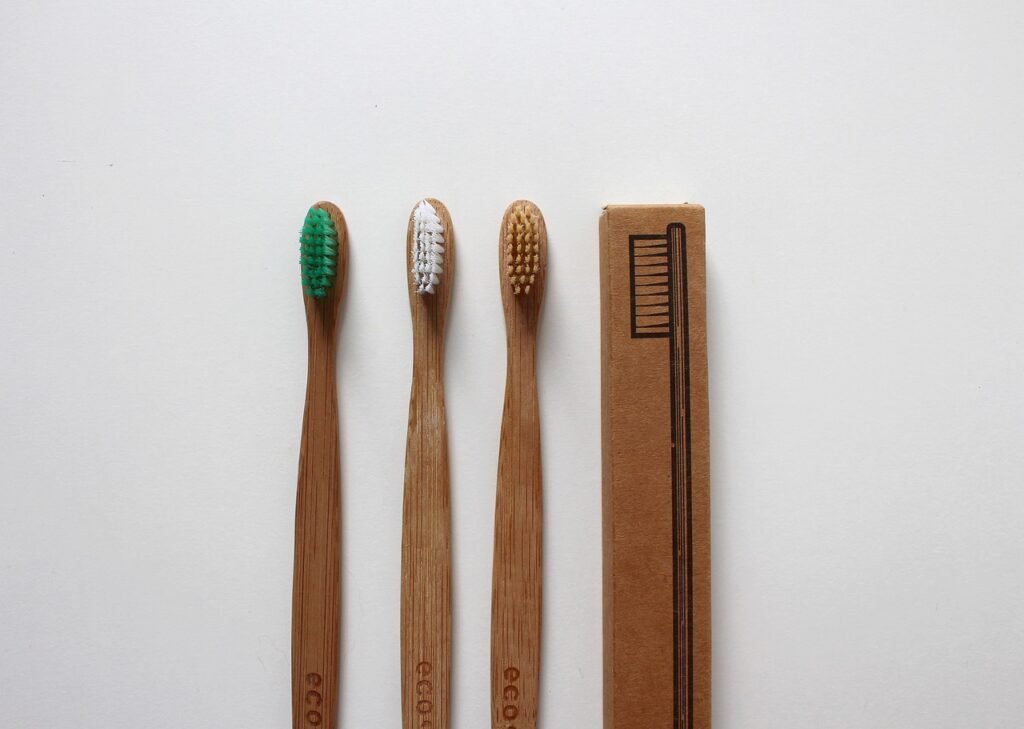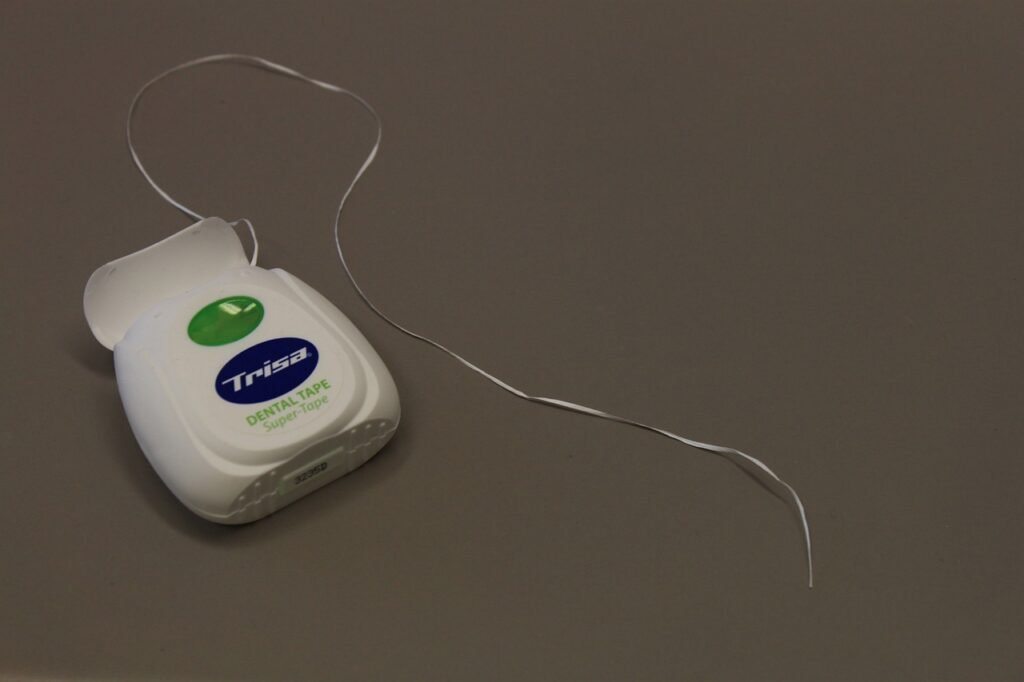
Before you reach for your toothbrush each morning, you might find yourself pondering a crucial question: should I floss first or brush first? It’s a debate that even dentists can’t seem to agree on. With oral hygiene being fundamental to overall health, it’s essential to understand the significance of both activities and their appropriate order in your routine. In this post, we’ll take a deep dive into the importance of brushing and flossing, the most effective routines for these tasks, and finally, resolve the ‘floss or brush first’ debate.
The Importance of Brushing Your Teeth

In our pursuit of maintaining a sparkling smile, brushing stands as the primary defender. This everyday ritual acts as a veritable sanitation crew, operating diligently to eliminate food debris and a sticky enemy known as plaque that accumulates on our teeth. Neglecting to remove this unwelcome visitor can lead to a cascade of oral health problems, including tooth decay, gum disease, and even tooth loss. And the benefits of brushing extend beyond just combating plaque.
Beyond its primary role, brushing also serves to spruce up our breath, making our morning conversations fresher and more pleasant. Plus, it takes a swipe at surface stains that darken our teeth over time, assisting in the quest for pearly whites. Brushing also provides a gentle massage to your gums, helping maintain their health and vitality.
Embrace this guardian of oral health by brushing your teeth twice a day, spending a good two minutes each time. Equip yourself with a soft-bristled toothbrush to gently yet effectively clean your teeth and a fluoride toothpaste to fortify them. Remember, consistency is key. Your teeth are counting on you, so make each brush count!
Flossing: Not Just an Optional Extra

Flossing, while often relegated to the sidelines of our oral care routine, is in fact a powerful player in the game of dental health. This unassuming hero has a special set of skills, capable of reaching the tight spaces that your toothbrush just can’t access – think those sneaky areas nestled between your teeth and hiding below the gum line.
So, why does it matter if these secluded spots get a little dirty? Well, these are the very spaces that tend to house persistent food particles and plaque, both of which are a bacterial paradise. Left undisturbed, these bacterial colonies can lead to tooth decay, gum disease, and rather unsavory breath – something no one is a fan of!
Each day, flossing has the crucial task of disrupting these bacteria parties, evicting these unwelcome guests from their hideouts. By doing so, it reduces the risk of developing oral health issues and helps to maintain your mouth’s freshness.
But the magic of flossing doesn’t stop there. It also steps in as a bit of a secret weapon in the war against plaque. While your toothbrush works hard to remove plaque from the surface of your teeth, floss comes along to clean up the remnants left behind in the hard-to-reach places. In essence, they’re a dynamic duo that work best when they’re both part of your daily routine.
In the end, flossing is far from an optional extra – it’s a pivotal part of your dental health arsenal. So, next time you’re winding down for the night or starting your day, remember to give floss the spotlight it deserves. After all, a little flossing goes a long way towards keeping that smile of yours healthy and bright!
The Best Routine for Brushing and Flossing

So, how do we go about adopting the best brushing and flossing routine? The American Dental Association (ADA) does not necessarily dictate a strict sequence in this arena. The paramount concern is that both flossing and brushing are performed correctly and thoroughly.
When you brush, be sure to use a quantity of fluoride toothpaste equivalent to the size of a pea. Brushing requires your full attention, don’t just go through the motions. Commit to brushing all surfaces of every tooth, paying careful attention to hard-to-reach areas. Once you’ve finished brushing, resist the urge to rinse immediately. Spit out the remaining toothpaste, but allow some residue to linger in your mouth. The reason behind this? It allows the protective fluoride in the toothpaste to continue working its magic, safeguarding your teeth for an extended period.
Moving on to flossing, approach this task with the same level of care. The key is to use the floss to reach the hidden crevices that your toothbrush cannot access, particularly those pesky areas between your teeth and below the gum line. Ensure that you’re adequately covering all these areas, making flossing a comprehensive process rather than a hasty add-on. Remember, your goal is to disturb and dislodge any food particles and plaque that have set up camp in these locations, evicting them before they can cause any significant damage.
Section Header: Floss-First: Is this the Way to Go?
Section Text: So, what’s the final verdict on the floss-first or brush-first debate? While it’s not a universally accepted directive, there’s emerging evidence hinting that flossing before brushing might offer some additional benefits. In a 2018 study featured in the Journal of Periodontology, it was discovered that flossing prior to brushing led to an increased concentration of fluoride in the mouth. This in turn provides a heightened level of protection against potential threats like tooth decay and gum disease. So, maybe it’s time to let floss take the opening act in your dental routine? Ultimately, the choice is yours. But remember, the key to a happy, healthy mouth lies in ensuring both brushing and flossing take center stage in your oral hygiene routine.
The Floss-First Approach: A Winning Strategy?

In the quest for the healthiest and brightest smile, the order in which you brush and floss could potentially play a role. The question remains: is flossing first a winning strategy?
Well, recent research seems to hint towards this direction. In a compelling study conducted in 2018 and published in the Journal of Periodontology, it was uncovered that flossing before brushing may have an unexpected perk. The research demonstrated an increase in fluoride concentration within the mouth after participants flossed first. So, what’s the big deal about fluoride concentration?
In the world of oral health, fluoride is the equivalent of a superhero. This mineral is instrumental in fortifying our teeth against the threats of decay and gum disease. So, the higher the fluoride levels, the stronger the defense against these common oral health concerns. With this revelation, it seems that letting floss play the opening act in your dental care routine could have its advantages. But, let’s not get too caught up in the order of operations.
What matters most is that both brushing and flossing are performed thoroughly and correctly, every single day. Regardless of whether you’re team ‘floss first’ or ‘brush first’, just ensure that these two champions of oral health continue to hold their rightful place in your daily routine. Happy brushing and flossing!
